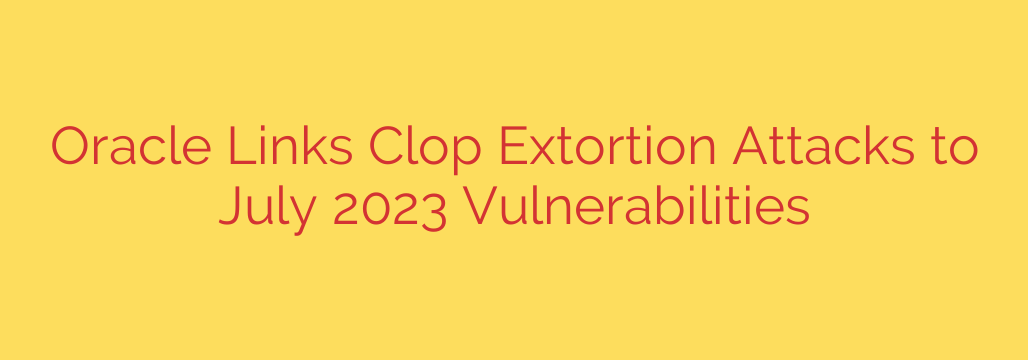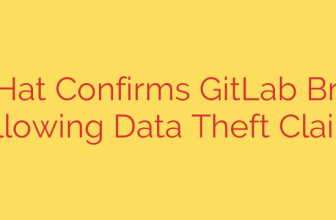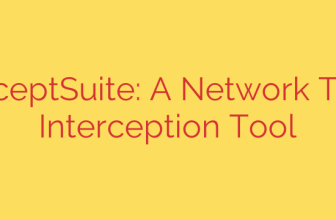
Oracle Confirms Clop Ransomware Exploited Critical Vulnerabilities: What You Need to Know
In a significant development for cybersecurity professionals, Oracle has officially confirmed that the notorious Clop ransomware and extortion group actively exploited critical vulnerabilities patched in its July 2023 Critical Patch Update (CPU). This confirmation bridges the gap between a known threat actor and specific software flaws, underscoring the urgent need for organizations to apply security patches without delay.
The advisory highlights that threat actors associated with Clop leveraged these security gaps to breach systems, steal sensitive data, and extort victims. This campaign was not theoretical; it had severe, real-world consequences for businesses that had not yet applied the necessary updates.
The Specific Vulnerabilities in the Crosshairs
The investigation directly links the Clop group’s activities to two specific vulnerabilities that were part of a broader attack chain. These flaws are identified as:
- CVE-2023-35036: A vulnerability in GoAnywhere MFT.
- CVE-2023-35708: A vulnerability affecting Progress MOVEit Transfer.
These vulnerabilities were exploited in conjunction with the now-infamous MOVEit Transfer zero-day vulnerability, CVE-2023-34362. The Clop group demonstrated a sophisticated understanding of the software supply chain, identifying and weaponizing multiple weak points to maximize the impact of their data theft campaign. By exploiting these flaws, the attackers could gain unauthorized access, bypass security protocols, and exfiltrate large volumes of confidential information.
A Pattern of Opportunistic Attacks
The Clop ransomware group has established a clear pattern of targeting widely used enterprise software, particularly secure file transfer solutions. Their campaign against MOVEit Transfer users affected thousands of organizations worldwide, from major corporations to government agencies.
This latest confirmation from Oracle reveals the group’s methodology: they don’t just rely on a single zero-day exploit. Clop actively seeks out and weaponizes related, known vulnerabilities in the software ecosystem to target organizations that are slow to patch. This strategy allows them to prolong their attack campaign and catch businesses that may have addressed the initial, high-profile vulnerability but neglected subsequent security updates.
Protecting Your Systems: Key Security Measures
The link between these patched vulnerabilities and active exploitation by a major extortion group serves as a critical reminder of the importance of proactive cybersecurity hygiene. Waiting for a threat to materialize is no longer a viable strategy. Here are essential steps every organization should take immediately:
Apply All Security Patches: The most crucial defense is to ensure all software, especially critical infrastructure like file transfer solutions, is up to date. If you have not applied Oracle’s July 2023 Critical Patch Update and subsequent security releases, you are at high risk. Prioritize patching as a non-negotiable security task.
Hunt for Indicators of Compromise (IoCs): Don’t assume your systems are clean. Actively review server logs, network traffic, and system files for any signs of unusual activity dating back several months. Look for unauthorized file access, unexpected data transfers, or the presence of suspicious scripts.
Enhance Network Monitoring: Implement robust monitoring and egress filtering to detect and block abnormal data exfiltration. If large amounts of data are suddenly being sent to an unknown external destination, your security systems should flag it immediately.
Review Third-Party Risk: The MOVEit campaign highlighted the immense risk posed by third-party software. Conduct thorough security assessments of all vendors and software solutions that handle your organization’s sensitive data. Ensure they adhere to strict and timely patching schedules.
The Bottom Line: Vigilance is Non-Negotiable
The confirmation that Clop exploited patched vulnerabilities is a stark warning. Threat actors are persistent, well-funded, and constantly searching for the path of least resistance. In many cases, that path is an unpatched system.
In today’s threat landscape, security patches are not just routine updates; they are active defenses against known, aggressive adversaries. By maintaining a diligent patching schedule, actively monitoring for threats, and hardening your digital infrastructure, you can significantly reduce your exposure and protect your organization from becoming the next victim of a large-scale extortion campaign.
Source: https://www.bleepingcomputer.com/news/security/oracle-links-clop-extortion-attacks-to-july-security-flaws/








